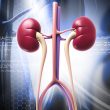In patients with peripheral vascular disease (PVD), the presence of diabetes has been significantly associated with increased failure of critical lower limb ischemia (CLI) treatment, and higher incidence of amputation. This relationship has been attributed mainly to comorbidities and patient characteristics, concomitant peripheral neuropathy and marked microvascular alteration. Also, a high proportion of these patients...
Stentless Strategy in ACS: Perfusion and Drug Coated Balloons
The initial strategy for the treatment of patients at high risk of bleeding (HBR) after percutaneous coronary intervention (PCI) has consisted of a short dual antiaggregation therapy (DAPT). Stents continue to improve, which has allowed the reduction of DAPT schemes and therefore the incidence of bleeding. However, researchers are also looking into another strategy to...
CAPTIS, a Novel Cerebral Embolic Protection System in TAVR
The incidence of stroke after TAVR ranges between 2 and 5%, depending on the series, which has been associated with higher morbimortality, affecting patient quality of life and their psycho-social environment. Many cerebral embolic protection systems have been developed in response, and even though they have been shown beneficial in many studies, their role in...
AHA 2023 | SELECT Trial: Semaglutide in Patients Without Diabetes
Given the obesity pandemic projected for the year 2035, it is imperative to address this disease as a priority, through well-known hygienic-dietary measures and the use of drugs that have shown promising results. Obesity has been identified as an independent cardiovascular risk factor, even after modifying risk factors associated with diabetes. Semaglutide, a GLP-1 agonist,...
Is TAVR Beneficial in Cardiogenic Shock?
The presence of cardiogenic shock (CS) in a setting of aortic stenosis ranges from 1% to 4%. The prognosis for this scenario is ominous due to subendocardial ischemia, which presents as a decrease in ventricular preload and an increase in afterload. Aortic valvuloplasty has been used in this context, but, unfortunately, it has been associated...
Renal Denervation is Safe and Reduces Blood Pressure and Medication
We are well aware of the multifactorial nature of hypertension, as well as the fact that it responds well to medication and lifestyle changes. It can be treated with renal denervation (RDN), which has been shown safe and effective in several randomized and non-randomized studies. However, the group of patients that will benefit most from...
Impella in High Risk Coronary Angioplasty before TAVR
The population is aging, which is closely related with the presence of aortic stenosis. This condition, as we know, is associated with coronary artery disease (CAD) approximately in 50% of cases. In high risk surgical patients, this calls for procedures such as percutaneous coronary intervention (PCI) and transcatheter aortic valve replacement (TAVR). PCI with ventricular...
Low vs High Dose Drug Coated Balloons in Femoropopliteal Territory
The use of drub coated balloons (DCB) in the treatment of femoropopliteal artery disease has grown. Studies on first generation high dose DCB (HD-DCB) have shown benefits, which has led to their recommendation by current guidelines. However, there have been reports of secondary effects caused by paclitaxel and its excipients. Second generation low dose DCB...
Long-Term Results from the BEST Study: Drug-Eluting Stents vs. Bypass Surgery in Diabetic Patients with Multiple Vessel Disease
The impact of diabetes on the development of cardiovascular disease is widely known, with a strong association with extensive and diffuse coronary artery disease. Decision-making regarding how to revascularize patients with multi-vessel disease is a complex process. In this context, coronary artery bypass grafting (CABG) has been recommended over percutaneous coronary intervention (PCI) based on...
TCT 2023 | VIVA Trial: TAVR vs. SAVR in Patients with Severe Aortic Stenosis and Small Aortic Annulus
Degenerative aortic stenosis (AS) is the most common valve condition. A significant number of AS patients presents a small aortic annulus (SAA), especially women. Treating this group of patients remains challenging, seeing as they have a high incidence of suboptimal hemodynamic results. Despite the development of TAVR (transcatheter aortic valve replacement), the current guidelines do...









